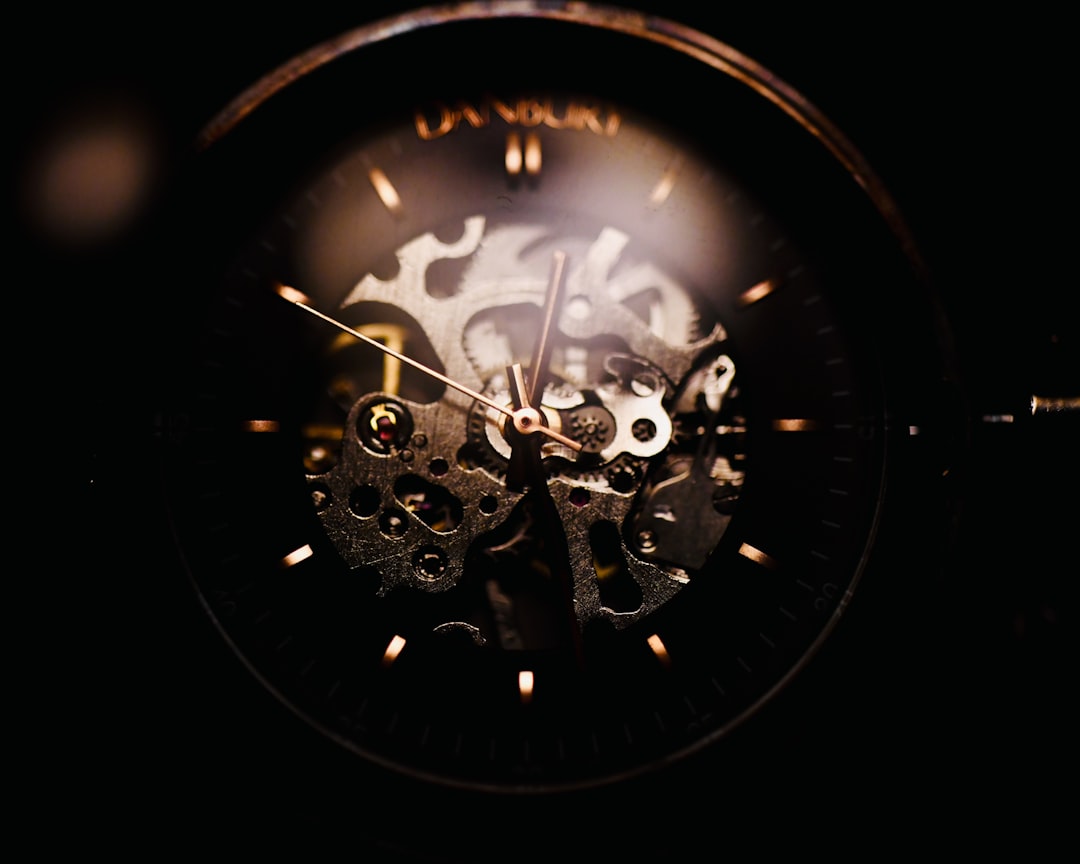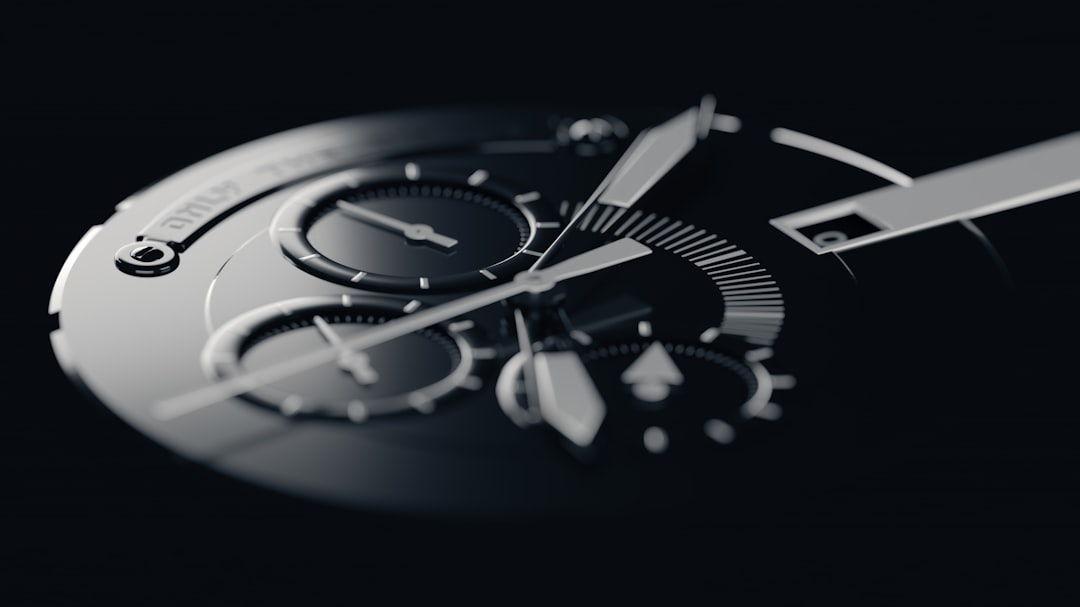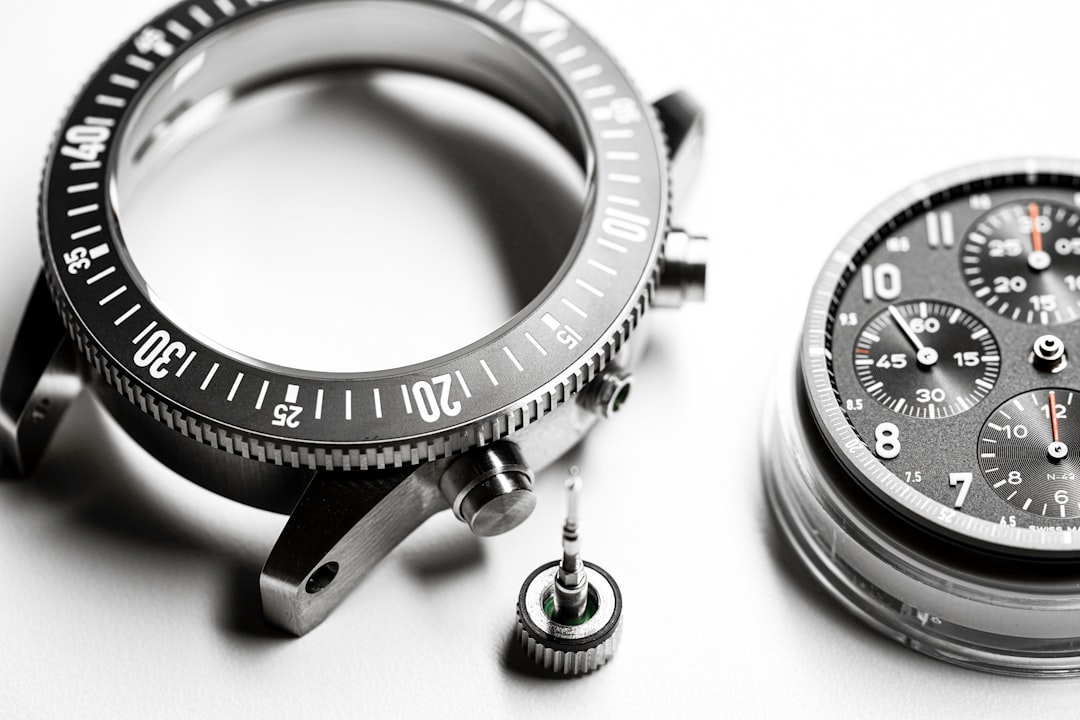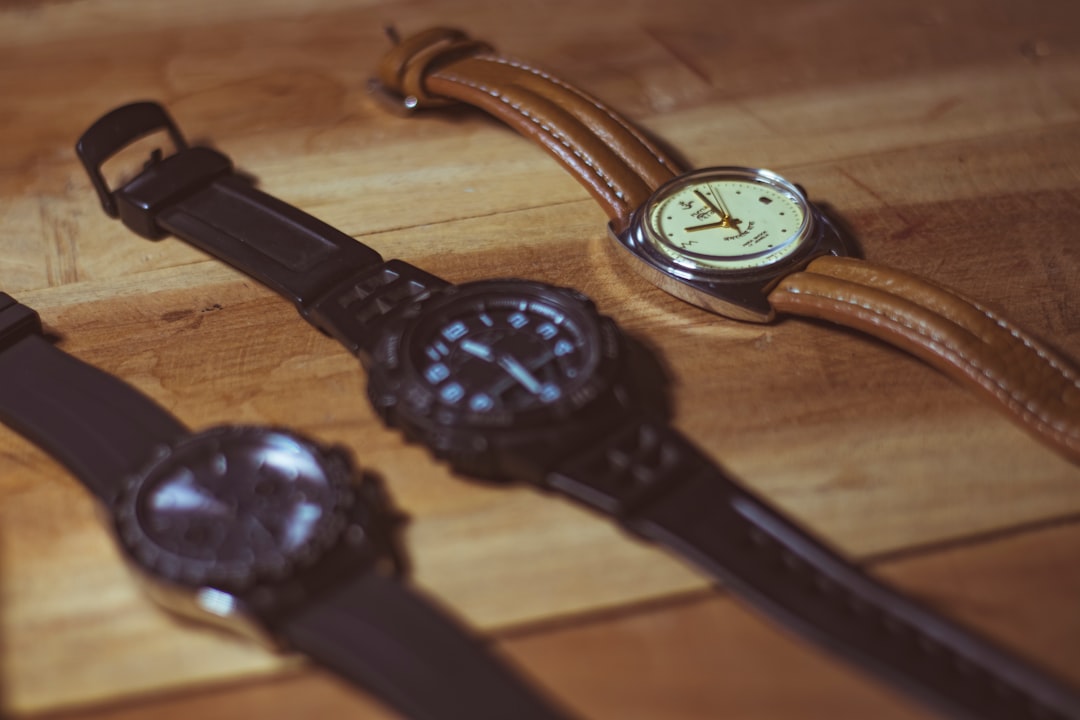In watch repair services, bridging the gap between physical transactions and verifiable digital engagement can be challenging, especially as customers seek assurance on quality, authenticity, and turnaround times. Frequently, shops rely on manual service tracking or paper-based processes instead of repair software; these traditional methods can leave both staff and clients in the dark about real-time repair updates or service transparency. Missing or incomplete information often leads to uncertainty, repeated calls, or missed follow-up opportunities.
QR codes have transformed this dynamic by turning every repair ticket, warranty card, or service receipt into a simple, trackable gateway for instant service verification and ongoing communication. No app downloads or complicated logins are required; a quick scan enables both customers and staff to verify repairs, access real-world feedback, and even trigger warranty registration or review requests like Google reviews. These advances boost operational efficiency, help identify high-value prospects, track customer engagement, and keep account data current, resolving areas that have historically caused missed opportunities for watch repair businesses.
This article explores how QR codes can be strategically deployed in watch repair services to enhance service verification, streamline client communication, boost your online presence through customer reviews, and ultimately differentiate your brand in a competitive landscape by addressing pain points that impact revenue and client loyalty.
How to Achieve Seamless Service Verification in Watch Repair Services Using QR Codes: A Step-by-Step Guide

Many watch repair businesses struggle with fragmented information, repair logs that do not sync with customer communications or incomplete updates that leave clients uncertain. These gaps can result in lost upsell opportunities, missed follow-ups, and lower trust. QR codes become powerful tools in this digital transition by closing the loop between offline repairs and transparent, trackable online validation.
- Replace analog receipts with QR-enabled service cards: Generate a unique QR code for each job that links to a secure, branded status page. Customers can view the repair history, parts used, estimated timelines, and technician notes. This eliminates guesswork and builds trust through clarity.
- Eliminate friction during status checks: Instead of repeated phone calls, customers scan a code on their claim ticket to see real-time updates like “in inspection,” “awaiting parts,” or “completed.” Add technician credentials and certifications to the page so quality is visible and verifiable in one tap.
- Turn pick-up moments into review moments: Place QR codes on pick-up slips and counter signage that link to your preferred review platforms. Pre-fill helpful context like the service category and location to reduce typing friction, increasing the likelihood of timely, positive reviews.
By integrating scanned QR engagements with a CRM, repair shops can capture valuable behavioral signals that previously went unnoticed. For example, repeat scans before a part delivery may signal anxiety and warrant proactive outreach. High engagement from a premium repair client may indicate a strong candidate for a maintenance plan. With platforms like Sona QR, you can route each scan to a trackable destination, update content dynamically without reprinting, and push scan events into tools like HubSpot or Salesforce for automated follow-ups.
Replacing outdated analog processes is straightforward. Printed brochures transform into interactive care guides with videos and cleaning tips. Paper warranty slips become digital registrations pre-filled from POS data. Manual sign-up sheets for service reminders are replaced by scan-to-subscribe forms with double opt-in for compliance using Google Forms. The result is a connected experience that feels modern, responsive, and trustworthy, while simultaneously reducing administrative workload and errors.
Why QR Codes Matter for Watch Repair Services

Frequent pain points in watch repair services stem from missed high-value prospects, lack of visibility into client engagement, and incomplete account data. QR codes address these modern challenges in several key ways that map directly to what happens in a watch repair shop each day. For measurement across print, see Sona’s offline attribution guide.
- Bridging the offline to online experience: Customers who receive paper claim tickets or view window signage can take instant action by scanning to check repair status, validate a warranty, or request a quote. This reduces manual lookups and abandoned inquiries while encouraging self-service.
- Simplicity for all audiences: Whether linking to a client portal or a review form, QR codes work across generations. No special app is needed; a phone camera is enough. This is especially helpful for customers dropping off repairs on the go who only have a minute to engage.
- Dynamic updates: If a repair timeline changes or a promotion shifts from battery swaps to bracelet re-sizings, the destination behind a dynamic QR code can be updated in seconds. No reprinting tickets or signage is required, so information stays accurate.
- Actionable analytics: Scan analytics reveal who engages, where they scan, and which assets perform. You can prioritize follow-ups with clients who check status frequently, test different calls to action, and quantify which promotions lead to reviews or second bookings. See community response rates.
- Cost effective at scale: QR codes can be deployed on receipts, repair tags, warranty cards, counter mats, and window decals. They align messaging across channels and add a digital layer to traditional materials without the cost of app development.
Appointment cards, envelopes used for mail-in repairs, and display stands near strap walls become strategic assets when they include QR codes. Each scan connects a physical touchpoint to a digital outcome, which means fewer missed contacts, more complete records, and a smoother customer journey from drop-off to verified pick-up.
Common QR Code Formats for Watch Repair Services Use Cases

Fragmented or generic client communication is common when verification, warranty claims, and follow-up are siloed in different tools. Choosing the right QR formats and destinations can centralize the experience and make each step measurable.
- Web links: Drive scanners to personalized status pages, care instruction hubs, or estimate request forms. Use dynamic URLs to tailor content by repair type, location, or client tier without reprinting codes.
- Feedback forms: Connect clients to branded surveys or Google, Yelp, and Facebook review pages. Streamline NPS and satisfaction capture at pick-up, then route negative feedback privately to a service recovery form. For quick setup, use Google Forms.
- vCards: Offer instant contact saves for your service desk, including store hours, map links, and WhatsApp or SMS options. vCards help prevent lost contact details and make it easier to re-engage later.
- Repair guarantee registration: Link to pre-filled warranty forms that pull from order data. Reduce incomplete registrations by confirming serial numbers and service categories on the destination page.
- Wi-Fi access: Allow waiting customers to join the network with one scan. Add a post-connection redirect to a maintenance tips page or strap promotion to support upsell without pressure.
Modern platforms like Sona QR allow you to manage all of these formats as campaigns, not just stand-alone codes. You can tag each code by location or media, update destinations, and track performance. Use dynamic QR codes for anything that benefits from analytics or flexibility, and reserve static codes for simple, permanent destinations like your store contact vCard.
Where to Find Growth Opportunities
In watch repair services, opportunities are often lost when repair confirmations, follow-up offers, or appointment reminders are not tracked or are hard to access. QR codes turn everyday assets into conversion points that generate measurable engagement.
- Counter and waiting area signage: Invite customers to scan for status checks, strap sizing guides, or preventive care tips. Highlight seasonal offers like waterproof testing before summer vacations.
- Printed tickets and invoices: Include a scan-to-track or scan-to-review code with a clear call to action. Reduce inbound calls by making answers available instantly.
- Packaging and mailers: For mail-in services and returns, add a code that confirms final inspection, care notes, and a maintenance reminder schedule. Include an upsell for strap bundles or future polishing.
- Window decals and OOH placements: Convert local foot traffic with a scan-to-quote or scan-to-book code. Use UTM parameters and distinct codes for each window to learn which messages perform best. Consider dedicated codes for storefronts to compare performance by placement.
- After-service accessories: Print codes on velvet pouches, protective sleeves, or polishing cloth tags. Link to care videos, warranty verification, and review prompts that keep engagement going after pick-up.
This integrated approach not only boosts conversions but also reveals intent signals at every stage. Scans from display windows indicate awareness interest. Scans from pick-up slips and warranty cards signal post-purchase engagement. Combined with CRM workflows, you can prioritize high-value clients and tailor outreach by behavior, not assumptions.
Use Cases for QR Codes in Watch Repair Services

QR codes become most powerful when they map to common customer interactions, from drop-off and diagnosis to pick-up and post-service care. Below are practical use cases with clear outcomes you can implement immediately.
- Scan-to-track service status: Place a unique QR on each claim ticket and invoice that links to a live status page. Customers see progress updates and technician notes, which reduces phone inquiries and shortens perceived wait times.
- Warranty verification and registration: Add a QR code to warranty cards and packaging that opens a pre-filled registration form. Clients verify authenticity and coverage details, which increases registration completion and reduces disputes later.
- Scan-to-review at pick-up: Include a code on the pick-up slip and at the counter that directs to your chosen review platform with pre-selected star ratings. This removes friction and accelerates the volume of positive feedback.
- Scan-to-quote for walk-ins: Use counter signage with a QR that opens a quick quote form for battery replacements, strap changes, and pressure testing. This makes it easy to capture lead information and schedule appointments for busy customers.
- Aftercare and care guides: Print a QR on polishing cloths or velvet pouches that links to a maintenance guide, including cleaning videos and reminders. This deepens trust and opens the door to scheduled maintenance plans.
For additional variety, consider a watch authenticity microsite accessible via QR on luxury repair envelopes. Scanning reveals before-and-after photos, parts lists, and a timestamped service certificate. Customers gain confidence from transparency, and your brand earns credibility that supports premium pricing.
How to Build High-Value Audiences for Retargeting with QR Code Campaigns
The risk of missing out on qualified prospects and upsell opportunities increases when client actions are not tracked or segmented. Each QR scan is a high-intent signal that can feed precise retargeting and follow-up workflows.
- Create unique QR codes for journey stages: Use distinct codes for awareness (window decals, flyers), consideration (service brochures, pricing sheets), and conversion (pick-up slips, invoices). Each cohort receives messaging matched to readiness, such as educational content versus limited-time offers.
- Tag audiences by use case and value: Segment by repair type and price tier: battery swaps, movement overhauls, luxury brand calibrations, vintage restorations. High-value repair segments can receive extended warranty offers and membership maintenance plans.
- Track location and timing context: Differentiate in-store scans versus at-home scans, weekday versus weekend, or pre-drop-off versus post-pick-up. Use this context to time outreach for when customers are most receptive.
- Sync segments to CRM and ad platforms: Connect Sona QR with HubSpot, Salesforce, and Meta to trigger email sequences, SMS check-ins, or custom audiences. For example, a post-pick-up scan triggers a same-day review request and a 30-day maintenance reminder, while a quote scan triggers a follow-up call from a service advisor. For paid follow-up, see Sona’s intent-driven retargeting playbook.
In watch repair, audience distinctions often include luxury owners versus everyday wearers, local walk-ins versus mail-in customers, and first-time visitors versus membership plan holders. By tagging these groups at the scan level, you can deliver tailored care guides, loyalty perks, and time-based promotions that increase lifetime value without adding manual workload.
Integrating QR Codes into Your Multi-Channel Marketing Mix
Disconnected campaigns with inconsistent messaging drain budget and patience. QR codes act as connective tissue across channels so each touchpoint contributes to a continuous, trackable journey.
- Brochures and print collateral: Add scan-to-book and scan-to-quote codes to trifold brochures and price lists. Track which brochures convert by placing unique codes per location or event. Offer educational content like “How to care for automatic movements” to nurture trust.
- Social posts and referral cards: Encourage satisfied clients to share a referral QR that attributes new business to them. Offer a strap discount for both parties when the referred customer books through that code.
- Direct mail and receipts: Make direct mail measurable with QR codes that present seasonal offers or watch care checklists. Include scan-to-review codes on receipts to capture sentiment while the experience is fresh. Explore QR-specific tactics for direct mail.
- In-store video displays: Display FAQs and repair demos with on-screen QR codes linking to booking forms or status checks. Reduce staff interruptions and give customers confidence about process and pricing.
- Events and pop-up booths: At mall kiosks or brand events, use QR-enabled badges and table tents to collect leads, schedule appointments, and distribute maintenance guides. Tag scans by event to compare ROI across venues. For booth ideas, see these conference strategies.
QR codes unify offline discovery with online decision-making. With Sona QR as your control center, you can monitor performance, A/B test calls to action, and sync scan data to your CRM so every channel contributes to a clear, consistent funnel.
Step-by-Step QR Campaign Execution Checklist
Launching a QR program in a watch repair environment is easiest when you follow a simple, repeatable framework. The steps below ensure clarity of purpose, smart design, and reliable measurement from day one.
Step 1: Choose Your Use Case
- Define a single business goal: Pick a focused outcome such as reducing status-check calls, increasing review volume, or improving warranty registrations for premium repairs.
- Map to a customer moment: Align each use case with a real interaction: at drop-off, during waiting, at pick-up, or after service. Example for this vertical: scan-to-book free pressure test during summer travel season.
- Set success metrics: Agree on trackable metrics like scan rate, form completion rate, conversion to booking, or review count. Establish benchmarks before launch.
Step 2: Pick a QR Code Type
- Static codes for permanent info: Use static codes for store contact vCards or evergreen care guides where tracking is less critical.
- Dynamic codes for agility and data: Choose dynamic codes for status pages, offers, and review links so you can update destinations, capture analytics, and segment by source without reprinting.
- Plan for privacy and compliance: Confirm that destinations and forms meet data protection and consent requirements, especially for email and SMS opt-ins.
Step 3: Design and Test the Code
- Brand the frame and add a CTA: Surround the code with a clear, benefit-driven call to action like “Scan to Track Your Watch” or “Verify Your Warranty.”
- Optimize for scannability: Ensure sufficient contrast, quiet zone, and minimum size based on distance. Avoid glossy or curved surfaces that cause glare. Watch this QR video for quick tips.
- Test across real conditions: Check scans on iOS and Android, in bright and dim lighting, flat and angled views. Validate that the destination loads quickly on mobile and uses clear headers.
Step 4: Deploy Across High-Impact Channels
- Match medium to intent: Put scan-to-track codes on claim tickets, scan-to-review on pick-up slips and counters, scan-to-quote on window decals and brochures, and scan-to-guide on pouches and cloths.
- Localize messaging: Tailor copy for each location or department. A strap bar might promote scan-to-size instructions, while the service bench emphasizes verification and timelines.
- Coordinate in-store and mail-in: For mail-in services, include QR codes on packing slips and return packaging to verify inspection and trigger review requests after delivery.
Step 5: Track and Optimize
- Use analytics from Sona QR: Monitor scans by time, device, and placement. Compare conversion behavior across print assets and locations.
- A/B test destinations: Experiment with different landing page layouts and calls to action. Test friction reducers like pre-filled forms and progress indicators.
- Close the loop in your CRM: Sync scan events to create tasks, trigger email flows, and update lead scores. Iterate weekly based on which assets drive bookings, reviews, and repeat visits.
Tracking and Analytics: From Scan to Revenue
Historically, watch repair shops lacked visibility into which offerings or materials drove returns, reviews, and upsells. Advanced QR analytics solve that problem by connecting each scan to meaningful outcomes you can measure, optimize, and scale.
- Track granular engagement: See scans by device type, time of day, location, and media. Tie scans to repair type and technician, then identify patterns such as higher review conversion for specific services or locations.
- Measure full-funnel behavior: Attribute review submissions, rebookings, and warranty registrations back to their originating QR codes. This shows which placements generate the best downstream outcomes, not just the most scans.
- Unify fragmented data: Feed scan activity into your CRM for a consolidated account view. Use dashboards to flag risks like stalled estimates or inactive repeat customers, and set alerts so staff can intervene early.
- Allocate revenue with confidence: Assign bookings and upsell purchases to QR-enabled collateral such as claim tickets or direct mailers. This allows you to invest in what works and sunset assets that underperform.
With Sona QR and Sona.com, you can capture every scan, enrich profiles with identity signals, and connect anonymous scans to known buyers. Sona’s multi-touch attribution links QR events with website visits, ad clicks, email engagement, and CRM outcomes. This combined view helps you prove pipeline contribution and closed revenue, not just engagement, making QR an integral part of your performance marketing strategy.
Tips to Expand QR Success in Watch Repair Services
Inconsistencies in how staff introduce QR codes and gaps in measurement can dilute results. Focus on a few best practices that align with how watch repair customers actually engage in-store and post-service.
- Use unique codes per asset and location: Assign distinct QR codes to claim tickets, counters, window decals, brochures, and pouches. This reveals which assets and messages actually drive scans and conversions.
- Add UTM parameters to every destination: Tag links by source and medium so your analytics accurately attribute traffic, reviews, and bookings by placement and campaign.
- Train frontline teams on the value exchange: Equip advisors with a simple script: “Scan this to check your repair status anytime and to verify your warranty after pick-up.” Confidence from staff boosts scan rates.
- Automate follow-up flows: Trigger a same-day review request after a pick-up scan, a 30-day care reminder for movement overhauls, and a 6-month battery health check message. Sona QR integrates with HubSpot and Salesforce to power these flows in real time.
- Deploy creative physical placements: Print QR codes on velvet pouches, inside strap packaging, or on the back of polishing cloth tags to capture engagement after service when customers are admiring the result.
These practices ensure that every scan is both helpful for the customer and valuable for your business. Over time, consistent deployment and disciplined tracking will compound into more reviews, stronger retention, and higher lifetime value.
Real-World Examples and Creative Inspiration

Some repair businesses struggle to generate reviews or connect in-person experiences to digital follow-up. QR-powered initiatives can flip those outcomes quickly when aligned to real customer moments.
- Luxury service with video verification: A high-end boutique includes a unique QR code on each warranty card that opens a technician-recorded video of the repair. Customers see the movement disassembly, parts replaced, and reassembly, along with a service certificate. Trust rises, review rates double, and support calls drop because transparency answers questions preemptively.
- Receipts that drive reputation: A value-focused chain prints a scan-to-review code on every receipt with a clear CTA. Within 90 days, they see a 40 percent lift in positive reviews and a surge in map pack visibility, which boosts new customer walk-ins.
- Pop-up battery kiosks with referrals: Urban kiosks hand out referral cards with personalized QR codes after a quick battery swap. Scanning schedules a maintenance check and applies a friend discount. The program increases repeat bookings and adds a predictable stream of referred customers.
These examples share two traits: easy scanning and a clear value promise. Whether you operate a luxury atelier or a high-volume kiosk, the right QR moment can create delight, social proof, and measurable growth without adding staff overhead.
Expert Tips and Common Pitfalls
Even well-designed campaigns can falter if execution details are overlooked. Avoiding common mistakes and training teams proactively will protect scan rates and customer satisfaction.
- Educate continuously: Hold short monthly refreshers so advisors and technicians can explain QR benefits clearly. Provide talking points for drop-off and pick-up moments and post them at the counter.
- Avoid reflective surfaces and tight corners: Place codes on matte materials with a proper quiet zone. Test at realistic distances and angles to detect issues like glare or lens hunting.
- Always pair with a benefit-driven CTA: Replace vague labels with customer-centric prompts such as “Scan to Verify Service Now” or “Scan to Leave a 30-Second Review.” Clarity improves conversion.
- Audit destinations regularly: Assign an owner to check QR links weekly for accuracy, page load speed, and mobile usability. Update review links and offers during seasonal changes or staffing shifts.
- Respond and iterate: Acknowledge reviews and feedback from QR flows promptly. Use insights to refine scripts, update care guides, and adjust promotions. Customers who feel heard are more likely to return and refer.
QR codes offer watch repair services a new level of transparency, efficiency, and engagement that directly addresses persistent industry pain points. By turning every service interaction into a measurable digital touchpoint, your shop can reduce manual workload, eliminate blind spots, and build loyalty through consistent, verified experiences.
Adaptable to both luxury and affordable segments, a strategic QR approach links expert workmanship to modern expectations: instant verification, clear communication, and frictionless feedback. With the right tools and habits in place, every scan becomes an opportunity to solidify trust, capture demand, and grow revenue. Start creating QR codes for free.
Conclusion
QR codes have revolutionized watch repair services by transforming traditional service verification into a seamless, trustworthy, and efficient process. They not only enhance customer confidence through instant access to repair details and authenticity checks but also open new avenues for customer acquisition and loyalty by delivering personalized, transparent experiences. Imagine providing your clients with a simple scan that instantly verifies their watch’s repair history, parts authenticity, and service guarantees—building trust and encouraging repeat business like never before.
With Sona QR, watch repair businesses can easily create dynamic, trackable QR codes that update in real time without any need for reprinting. This means you can connect every scan to valuable insights, streamline verification processes, and foster stronger customer relationships that directly impact your bottom line. Start for free with Sona QR today and turn every repair into a verified, engaging, and revenue-driving experience.
FAQ
How do I choose a reliable watch repair service?
Choose a watch repair service that offers transparent, real-time updates on repair status, verifiable technician credentials, and uses tools like QR codes to provide clear communication and warranty verification.
What are the common watch repair services offered?
Common watch repair services include battery replacements, strap changes, pressure testing, movement overhauls, luxury brand calibrations, and vintage restorations.
How much does it cost to repair a watch?
The article does not specify exact costs but suggests that costs vary by service type, repair complexity, and brand, and that QR codes can help provide quick, personalized quotes.
What are the signs that my watch needs repair?
Signs include irregular timekeeping, visible damage, battery issues, or when maintenance reminders are triggered, such as for movement overhauls or water resistance tests.
How can I tell if a watch repair shop is reputable?
A reputable shop provides transparent repair updates via digital status pages, offers warranty verification, displays technician credentials, collects and showcases verified customer reviews, and uses modern tools like QR codes for communication.





















